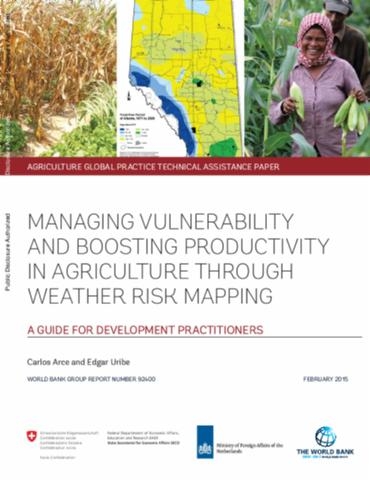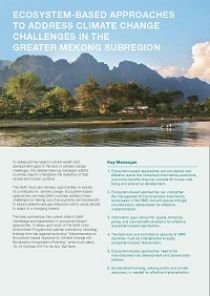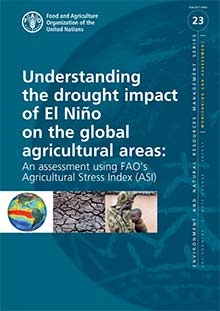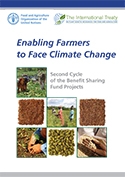Publications
This contains experience notes, adaptation notes, policy briefs, policy papers, technical reports, stories on good practices, and other publications related to climate change adaptation and mitigation in Southeast Asia not just from SEARCA, but also from KC3's partners and other agencies/institutions.
Assessment, monitoring, and evaluation are integral parts of climate change adaptation (CCA) planning and implementation. Assessment activities contribute to defining indicators, baselines (situations at the beginning of the intervention), and baseline projections (without intervention). On the other hand, M&E activities set baselines, define indicators, measure progress, and evaluate successes and setbacks in adaptation interventions. Designing a Monitoring and Evaluation (M&E) System is therefore challenging, particularly when deciding which indicator will match with a particular goal to measure project success.
Productivity in the agricultural sector is inherently dependent on weather, such as variations in rainfall and temperature. As a result, weather risk events can cause losses in yield and production that translate into economic losses for producers, as well as other sector stakeholders that depend on income from agricultural trade, transport, processing, or export. Extreme temperatures, floods, droughts, hailstorm, and windstorms are just a few examples of weather risk events that cause major economic losses. In developing countries, weather risk is especially significant due to the…
The financing needs of climate change mitigation and adaptation are uncertain and large. In response, an extensive architecture of financing for climate change mitigation and adaptation has started to develop around the world. Is there a role for a regional approach in this developing financing architecture? This paper examines the issue in the context of the Asia and Pacific region. The paper argues that, while climate change is a global public good, it has strong regional features, and, consequently, regional institutions and financing arrangements play an…
To safeguard the region’s natural wealth and development gains in the face of climate change challenges, the Greater Mekong Subregion (GMS) countries need to strengthen the resilience of their natural and human systems. The GMS must also harness opportunities to reduce its contribution to climate change. Ecosystem-based approaches can help GMS countries address these challenges by making use of ecosystems and biodiversity to reduce greenhouse gas emissions and to assist people to adapt to a changing climate. The brief summarizes the current state of GMS knowledge and experience on ecosystem-based approaches.…
El Niño is local warming of surface waters that takes place in the entire equatorial zone of the central and eastern Pacific Ocean of the Peruvian coast and which affects the atmospheric circulation worldwide (Kiladis and Diaz, 1989). It usually peaks around Christmas, hence the name of the phenomenon: El Niño is Spanish for Christ Child. La Niña refers to the cold equivalent of El Niño. It is a recurrent weather phenomenon that takes place approximately every two to seven years and usually lasts between…
Countries report their greenhouse gas (GHG) emissions and removals from all sectors via national GHG Inventories, submitted to the United Nations Framework Convention on Climate Change (UNFCCC) in accordance with international climate policy agreements and technical guidelines developed by the Intergovernmental Panel on Climate Change (IPCC). The agriculture sector represents a unique challenge for national inventory compilers, especially in developing countries, due to significant difficulties in compiling and regularly updating national statistics for agriculture, forestry, and land use —the first necessary step in preparing…
Enabling Farmers to Face Climate Change: Second Cycle of the Benefits Sharing Fund Projects This booklet provides an overview of the characteristics and main activities of the projects that are being implemented as part of the second project portfolio of the Benefit-sharing Fund (BSF) of the International Treaty on Plant Genetic Resources for Food and Agriculture. This second portfolio consists of 22 projects that are currently implemented in 33 countries across Africa, Asia, Near East, Latin America, and the Caribbean.…
Genetic resources for food and agriculture play a crucial role in food security, nutrition, and livelihoods and in the provision of environmental services. They are key components of sustainability, resilience, and adaptability in production systems. They underpin the ability of crops, livestock, aquatic organisms, and forest trees to withstand a range of harsh conditions. Thanks to their genetic diversity plants, animals and micro-organisms adapt and survive when their environments change. Climate change poses new challenges to the management of the world’s genetic resources for food and agriculture,…
Climate variability and weather fluctuations are important risk factors in crop production. They have caused reduced yields and significant reduction in crop production throughout Southeast Asia. As a risk management strategy, crop insurance has been promoted in risk-prone areas in the region to reduce the adverse impacts of climate hazards. However, crop insurance products have not been very popular among farmers and crop growers due to limited coverage amidst high premium as well as apparent subjectivity and bias in crop…
Agriculture is a key sector providing economic and social development in Southeast Asian countries, where a majority of the region’s population depend on agricultural production as a main source of household income. The implication of global environmental change has extended the agricultural agenda to respond to the drivers of climate change—in the context where agriculture is both a contributor to greenhouse gas (GHG) emissions and a possible mitigating factor through the adjustment of practices and the adoption of new technologies.























